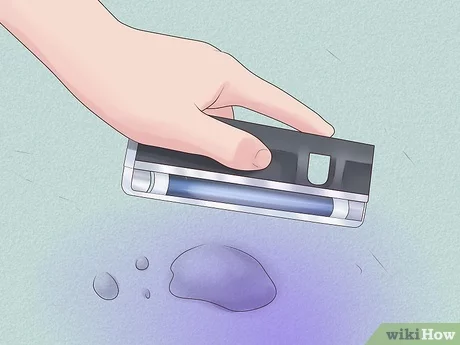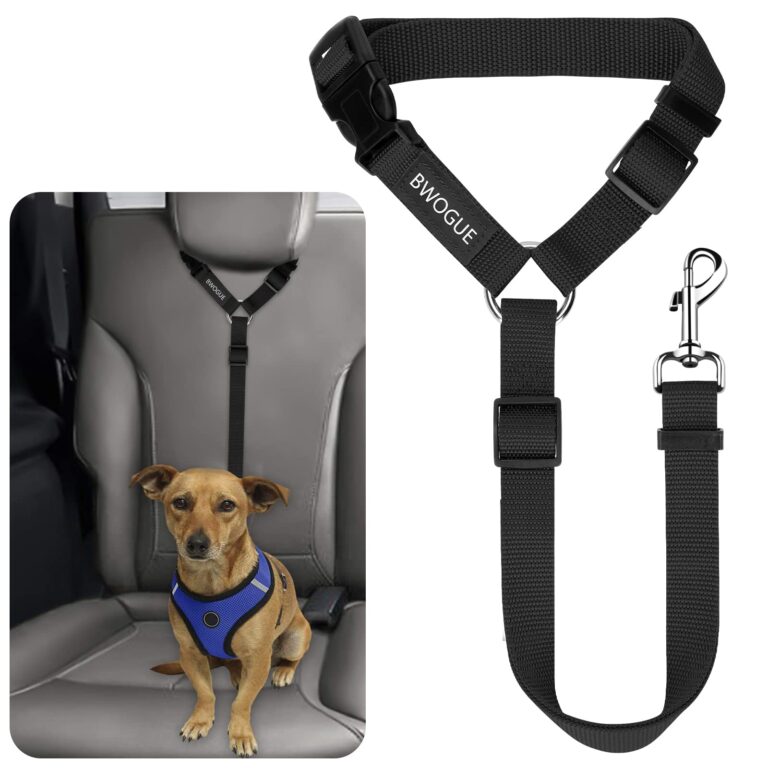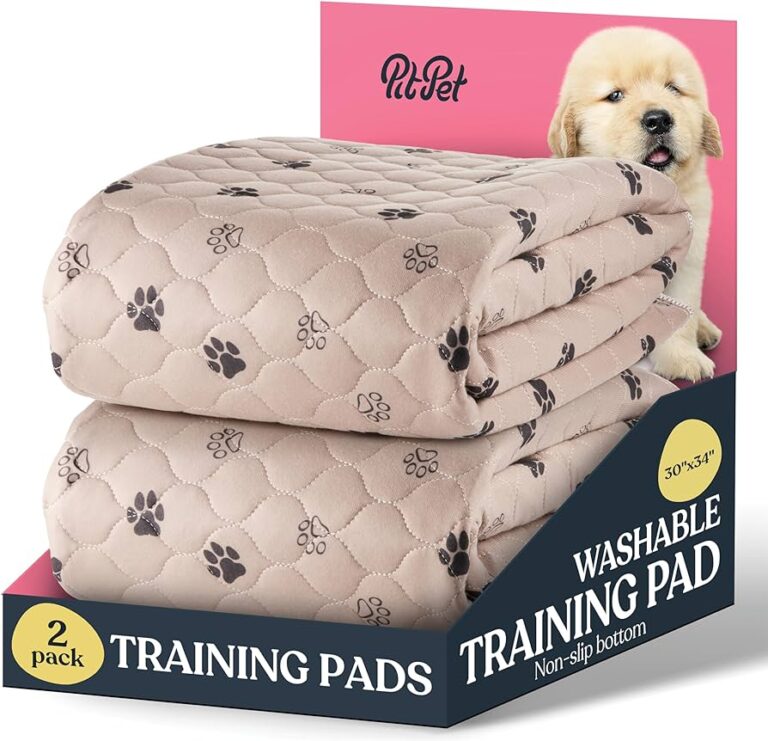Is Leather or Microfiber Better for Dogs? Ultimate Guide
Leather is generally better for dogs than microfiber. It is more durable and easier to clean.
Choosing the right furniture material is essential for dog owners. Leather and microfiber are popular choices, each with its pros and cons. Leather, known for its durability, resists scratches and is easy to clean. This makes it ideal for homes with active dogs.
Microfiber, on the other hand, is softer and more affordable but can stain easily and may not withstand heavy wear and tear. Pet owners should consider their dog’s behavior and needs when selecting between leather and microfiber. The right choice can enhance comfort while maintaining the longevity of the furniture.
Introduction To Pet-friendly Upholstery
Choosing the right upholstery for your home is crucial if you have pets. Dogs love to jump and play on furniture, so your couch needs to be durable. It should also be easy to clean and comfortable for your furry friend. This guide will help you decide between leather and microfiber for your pet-friendly home.
The Importance Of Selecting The Right Material
Durability is key when picking upholstery for homes with dogs. Dogs can be rough on furniture with their nails, drool, and fur. The material should withstand these challenges.
Easy cleaning is another important factor. Dogs can bring in dirt and mud from outside. A material that is easy to clean will save you time and effort.
Comfort matters too. Your dog might spend a lot of time on the couch. Make sure the upholstery is soft and cozy for them.
Leather And Microfiber Compared
| Feature | Leather | Microfiber |
|---|---|---|
| Durability | Very durable, can last for years | Durable, but not as long-lasting as leather |
| Cleaning | Wipes clean easily, but can stain from spills | Stain-resistant, often machine washable |
| Comfort | Cool and smooth, can be slippery | Soft and plush, more comfortable for pets |
| Cost | More expensive | More affordable |
Leather: A Classic Choice For Pet Owners
Leather remains a popular choice for many pet owners. It offers a blend of elegance and practicality. This section explores why leather might be the best option for you and your furry friend.
Durability And Longevity Of Leather
Leather is known for its durability. It can withstand the wear and tear from active dogs. Unlike other materials, leather does not easily tear or puncture. This makes it a long-term investment for your home.
With proper care, leather can last for many years. This longevity means fewer replacements and less waste. It’s both economically and environmentally friendly.
Ease Of Maintenance And Cleaning
Cleaning leather is straightforward. Spills and dirt can be wiped off with a damp cloth. This is especially useful for pet owners dealing with muddy paws and fur.
Leather does not absorb odors. This is beneficial for homes with pets. Your furniture will stay fresh and clean-smelling.
Maintaining leather involves simple steps. Regularly apply a leather conditioner. This keeps the material soft and prevents cracking. A well-maintained leather piece can look as good as new for years.
Additional Benefits
- Stylish appearance: Leather adds a touch of elegance to any room.
- Hypoallergenic: Leather does not harbor allergens like dust mites.
- Temperature regulation: Leather stays cool in the summer and warm in the winter.
The benefits of leather are clear. It’s durable, easy to clean, and stylish. These features make it a classic choice for any pet owner.
The Downside Of Leather With Dogs
Leather is a popular choice for furniture due to its durability and luxurious feel. But is it the best option for homes with dogs? There are some downsides to consider.
Susceptibility To Scratches And Bites
Leather is prone to scratches and bites from dogs. Dog nails can easily scratch the surface of leather, causing unsightly marks. Chewing can also damage leather. Dogs, especially puppies, may chew on furniture, leaving holes and tears.
Potential For Discomfort In Extreme Temperatures
Leather can be uncomfortable for dogs in extreme temperatures. Leather gets hot in summer and cold in winter. This can make it uncomfortable for dogs to sit or lay on. Microfiber, in contrast, maintains a more consistent temperature, providing a more comfortable resting place for pets.
Microfiber: A Modern Alternative
Microfiber is gaining popularity among dog owners. It offers many benefits that make it a great choice for homes with pets. This modern fabric combines comfort with durability, making it ideal for households with dogs.
Softness And Comfort Of Microfiber
Microfiber is known for its softness. It feels gentle against the skin, providing a cozy resting place for your dog. The tightly woven fibers create a smooth surface that is comfortable for your furry friend to lie on.
Many dog owners find that their pets prefer microfiber. Its plush texture mimics the feeling of natural fur. This makes it a favorite choice for dog beds and furniture covers. The softness of microfiber can help keep your dog calm and relaxed.
Resistance To Stains And Odors
One of the biggest advantages of microfiber is its resistance to stains and odors. The fabric’s tight weave prevents liquids from seeping in, making it easier to clean up spills. This is especially useful for homes with puppies or older dogs.
Microfiber also has natural properties that resist odors. It does not trap smells like other fabrics might. This helps keep your home smelling fresh even with a dog around. For pet owners, this is a significant benefit.
| Feature | Microfiber |
|---|---|
| Softness | High |
| Comfort | Excellent |
| Stain Resistance | Very Good |
| Odor Resistance | High |
Microfiber is a practical and comfortable choice for dog owners. Its benefits make it a modern alternative to traditional materials like leather.
Challenges Of Microfiber In A Dog-friendly Home
Microfiber sofas and furniture often seem like a good choice for households with dogs. They are soft, affordable, and come in various colors. But they have some significant challenges when it comes to a dog-friendly home. These challenges can make maintaining a clean and damage-free home more difficult.
Attracting Hair And Allergens
One of the biggest challenges is microfiber’s tendency to attract hair and allergens. The fibers can act like magnets for pet hair, making cleaning a never-ending task. This can be especially difficult for families with allergy sufferers.
Here is a quick overview:
| Challenge | Impact |
|---|---|
| Attracts pet hair | Frequent cleaning required |
| Collects dust and allergens | May worsen allergies |
Keeping microfiber clean means frequent vacuuming and washing. This can be time-consuming and exhausting for busy pet owners.
Vulnerability To Claw Damage
Another significant issue is microfiber’s vulnerability to claw damage. Dogs love to jump and play on furniture. Their claws can easily snag and tear the delicate fibers.
Consider these points:
- Microfiber is not claw-resistant.
- Torn fibers can make the furniture look old and worn.
- Repairing microfiber can be costly and difficult.
Owners need to trim their dog’s nails regularly to minimize damage. But this solution is not always foolproof. Dogs can still cause damage even with well-trimmed nails.
:max_bytes(150000):strip_icc()/great-pet-friendly-fabrics-1976777_FINAL-66e512802221439186bbf7acd1932d25.png)
Credit: www.thespruce.com
Comparative Cost Analysis
Choosing the best furniture material for your dog-friendly home can be challenging. Understanding the costs associated with leather and microfiber can make the decision easier. This section will break down the initial investment and value over time, as well as the hidden costs of wear and tear.
Initial Investment And Value Over Time
When buying furniture, the initial cost is a major factor. Leather furniture is often more expensive than microfiber. Here’s a breakdown:
| Material | Average Cost |
|---|---|
| Leather | $1,500 – $4,000 |
| Microfiber | $500 – $1,500 |
Leather furniture can last longer, making it a better long-term investment. Microfiber is cheaper initially but may need replacing sooner.
The Hidden Costs Of Wear And Tear
Dogs can cause significant wear and tear on furniture. Let’s consider the hidden costs:
- Leather: Scratch marks are common. Professional repairs can be costly.
- Microfiber: Stains and odors can accumulate. Frequent cleaning may be required.
Leather may require professional cleaning and repairs, which add to the cost. Microfiber can become stained easily but is generally easier to clean at home.
In summary, while leather has a higher initial cost, it may be more durable. Microfiber is more affordable initially but might not last as long.
Health And Safety Considerations For Your Dog
Choosing the right material for your dog’s bed or furniture can impact their health and safety. Leather and microfiber are popular choices, but which one is better for your dog? Let’s explore the health and safety considerations for your furry friend.
Material Toxicity And Allergies
Dogs are sensitive to certain materials. Leather is a natural material, but it can be treated with chemicals. Some dogs are allergic to these chemicals, causing skin irritations.
Microfiber is a synthetic material. It’s generally hypoallergenic, making it a safer option for dogs with allergies. Always check the specific product for any harmful additives.
| Material | Possible Allergens |
|---|---|
| Leather | Chemicals used in tanning |
| Microfiber | Usually hypoallergenic |
Comfort And Support For Your Pet’s Joints
Comfort is crucial for your dog’s health. Leather can be firm and may not provide enough cushioning for older dogs or those with joint issues.
Microfiber is softer and often comes with additional padding. This can offer better support for your dog’s joints and overall comfort.
- Leather: Firm, may lack cushioning
- Microfiber: Soft, often padded
Choosing the right material can make a significant difference in your dog’s comfort and well-being.

Credit: www.amazon.com
Making The Decision: Factors To Consider
Deciding between leather and microfiber for your dog’s comfort involves many factors. Each material has its pros and cons, and what works for one dog may not work for another. To help you make an informed choice, we’ve broken down the key considerations under specific subheadings.
Your Dog’s Age, Breed, And Behavior
Age plays a crucial role in deciding the right upholstery. Puppies and senior dogs have different needs. Puppies tend to chew and scratch more, while older dogs might have bladder control issues. Microfiber is often easier to clean and more resistant to wear and tear.
Breed also matters. Larger breeds like German Shepherds and Great Danes put more pressure on furniture. Leather is durable and can withstand this pressure better. Smaller breeds might be more comfortable on soft microfiber.
Behavior is another vital factor. If your dog is highly active and loves to jump on furniture, leather might be more suitable. Leather is less likely to get damaged by sharp nails compared to microfiber. For calm dogs, microfiber offers a cozy and soft feel.
Matching Upholstery To Your Lifestyle And Decor
Consider your lifestyle when choosing between leather and microfiber. Leather is easy to clean and ideal for busy households. Spills and stains can be wiped off quickly. Microfiber, on the other hand, is more resistant to scratches and fur.
Think about your home decor too. Leather adds a touch of elegance and is available in various shades. It fits well with modern and classic decor styles. Microfiber comes in many colors and patterns, making it versatile for any decor theme.
Here’s a quick comparison table to help you decide:
| Factor | Leather | Microfiber |
|---|---|---|
| Durability | High | Moderate |
| Cleaning | Easy | Moderate |
| Comfort | Moderate | High |
| Scratch Resistance | High | Moderate |
| Cost | High | Low |
Ultimately, the choice between leather and microfiber depends on your dog’s specific needs and your home’s requirements.
Care Tips For Leather And Microfiber
Choosing between leather and microfiber for your dog-friendly furniture can be tough. Both materials have their benefits. Knowing how to care for them can make your decision easier. Below are some helpful tips for maintaining both leather and microfiber.
Regular Maintenance Routines
Regular maintenance keeps your furniture looking good. Leather needs to be dusted with a soft cloth weekly. Use a leather conditioner every 6 months. Microfiber requires weekly vacuuming. This helps to remove pet hair and dirt.
Check the manufacturer’s guidelines for specific care instructions. Both materials can last longer with proper care.
Dealing With Accidents And Spills
Accidents happen, especially with pets. Leather is easy to wipe clean with a damp cloth. Use a mild soap if needed. Dry the area with a clean, dry cloth.
For Microfiber, blot the spill immediately with a clean cloth. Use a mild detergent and water solution for cleaning. Always test in an inconspicuous area first.
| Material | Regular Maintenance | Accident Handling |
|---|---|---|
| Leather | Dust weekly, condition bi-annually | Wipe with damp cloth, mild soap if needed |
| Microfiber | Vacuum weekly | Blot immediately, use mild detergent solution |
Following these simple care tips can help keep your leather or microfiber furniture looking its best. This ensures a comfortable and stylish home for you and your dog.

Credit: www.amazon.com
Final Thoughts On Choosing The Right Material
Choosing between leather and microfiber for your dog can be tough. Each material has its pros and cons. Let’s dive into the final considerations.
Balancing Aesthetics And Functionality
Leather offers a classic, timeless look. It is easy to clean and durable. Leather can withstand scratches and spills, making it ideal for pets. Microfiber, on the other hand, is soft and comfortable. It is also easy to clean and resists stains. Microfiber can be a great choice for a modern, cozy home.
Both materials come in various colors and styles. You can match them to your home’s decor. Comfort and durability are key factors. Your choice should balance these aspects.
The Verdict From Pet Owners And Experts
Pet owners and experts have mixed opinions. Many love leather for its durability and ease of cleaning. They say leather can last for many years. Experts also note that leather can be a bit cold and slippery for dogs. Some dogs may not find leather as comfy as microfiber.
Microfiber fans praise its softness and warmth. They say their pets love snuggling on microfiber. Experts highlight that microfiber is less resistant to scratches. It may not last as long as leather.
Here is a quick comparison table:
| Feature | Leather | Microfiber |
|---|---|---|
| Durability | High | Moderate |
| Comfort | Moderate | High |
| Maintenance | Easy | Easy |
| Aesthetics | Classic | Modern |
Ultimately, the best choice depends on your and your dog’s needs. Consider your dog’s comfort and your home’s style. Weigh the pros and cons carefully.
Frequently Asked Questions
Is Leather Or Fabric Better With Dogs?
Leather is better for dogs. It’s durable, easy to clean, and resists odors and stains. Fabric can trap hair and dirt.
What Couch Material Holds Up Best With Dogs?
Leather and microfiber are the best couch materials for dogs. They resist stains, scratches, and are easy to clean.
Is Leather Better For Dog Hair?
Yes, leather is better for dog hair. It repels fur, making it easier to clean and maintain.
Is Microfiber More Durable Than Leather?
Microfiber is generally less durable than leather. Leather offers higher longevity and resistance to wear and tear.
Conclusion
Choosing between leather and microfiber for dogs depends on your lifestyle and needs. Leather is durable and stylish. Microfiber is affordable and easy to clean. Consider your dog’s habits and your budget. Both materials have unique benefits, making either a great choice for pet owners.
Make an informed decision for your furry friend.
- Can I Get in a Taxi Without a Car Seat? - January 26, 2025
- Can I Get Chlamydia From a Toilet Seat? - January 26, 2025
- Can I Get an Uber With a Car Seat? - January 26, 2025






